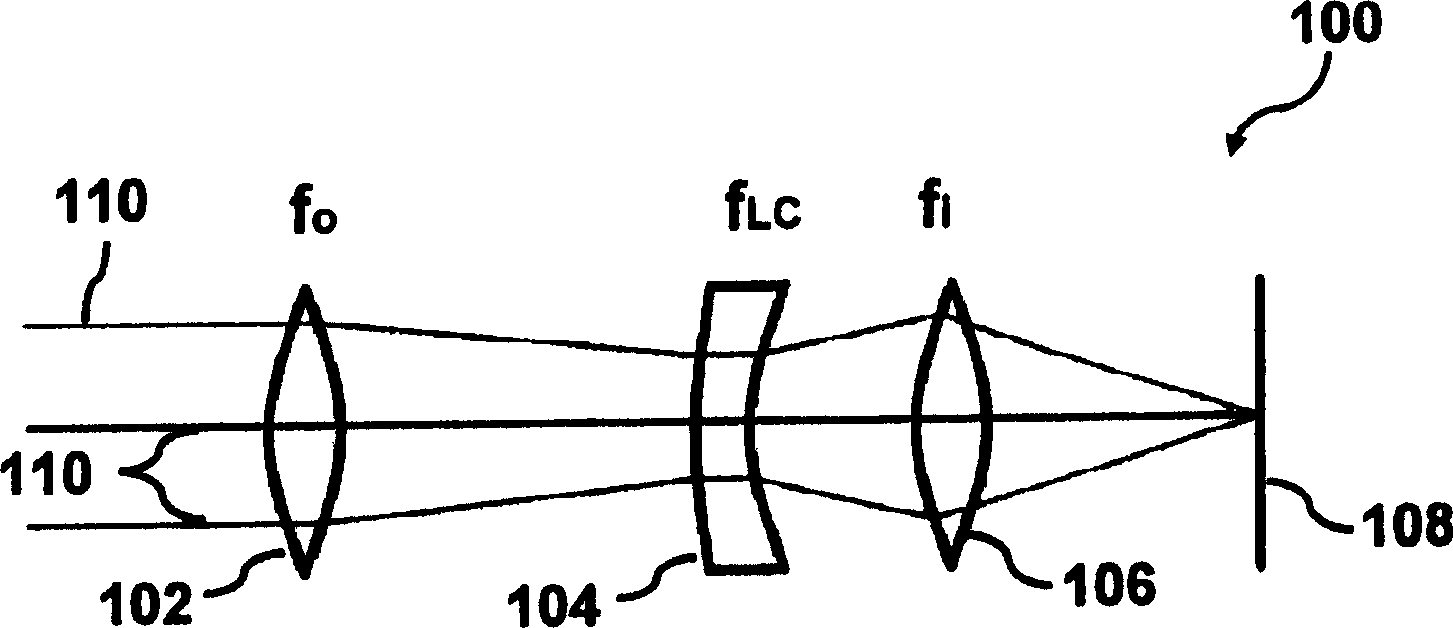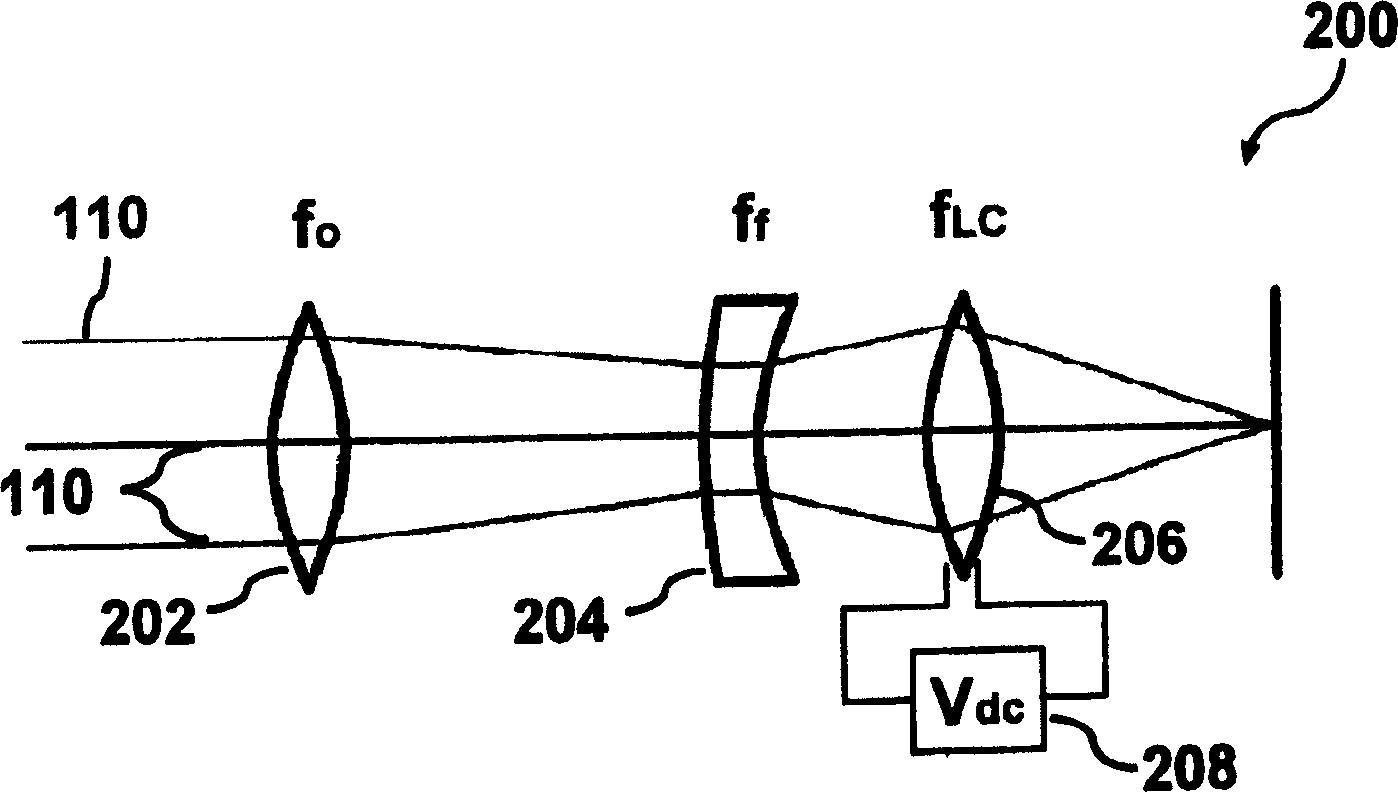Motionless lens systems and methods
A lens, lens technology, applied in the parts, lenses, instruments, etc. of TV systems, can solve the problem of moving one or more lens parts, etc.
- Summary
- Abstract
- Description
- Claims
- Application Information
AI Technical Summary
Problems solved by technology
Method used
Image
Examples
Embodiment Construction
[0031] figure 1 A lens 100 according to an embodiment of the present invention is shown. The lens 100 includes an objective lens 102 , an adjustable field lens 104 , and an imaging lens 106 . Objective lens 102 (with f o Indicated) and imaging lens 106 (with f i denoted) may be a conventional objective lens and a conventional image lens (also referred to as an imaging lens or an eyepiece), respectively, which may be made of glass, plastic, or other known conventional lens materials.
[0032] The imaging lens 106 can be positioned away from, adjacent to, or shaped as an adjustable field lens 104 (with f LC Indicates part of). As will be described in further detail herein, the tunable field lens 104 is a lens whose refractive index is varied, for example, by applying a voltage to the tunable field lens 104 . By changing the refractive index of the tunable field lens 104, the focal length or focal point of the lens 100 can be changed.
[0033] As an example, such as figure...
PUM
 Login to View More
Login to View More Abstract
Description
Claims
Application Information
 Login to View More
Login to View More - R&D
- Intellectual Property
- Life Sciences
- Materials
- Tech Scout
- Unparalleled Data Quality
- Higher Quality Content
- 60% Fewer Hallucinations
Browse by: Latest US Patents, China's latest patents, Technical Efficacy Thesaurus, Application Domain, Technology Topic, Popular Technical Reports.
© 2025 PatSnap. All rights reserved.Legal|Privacy policy|Modern Slavery Act Transparency Statement|Sitemap|About US| Contact US: help@patsnap.com



